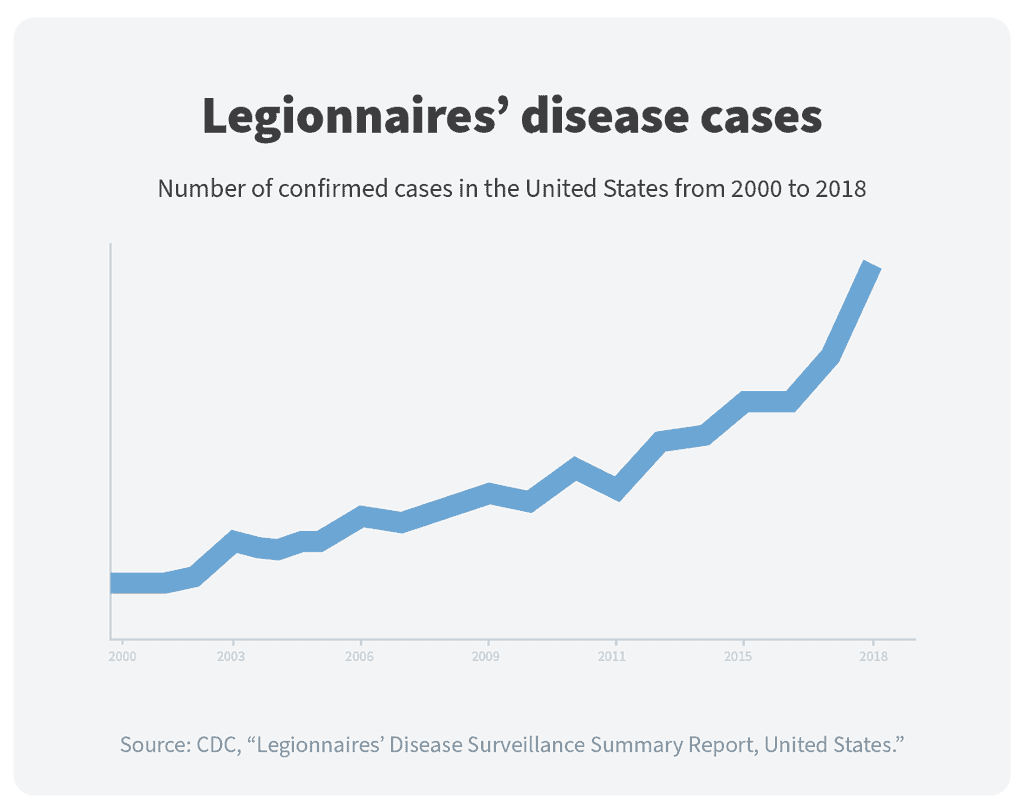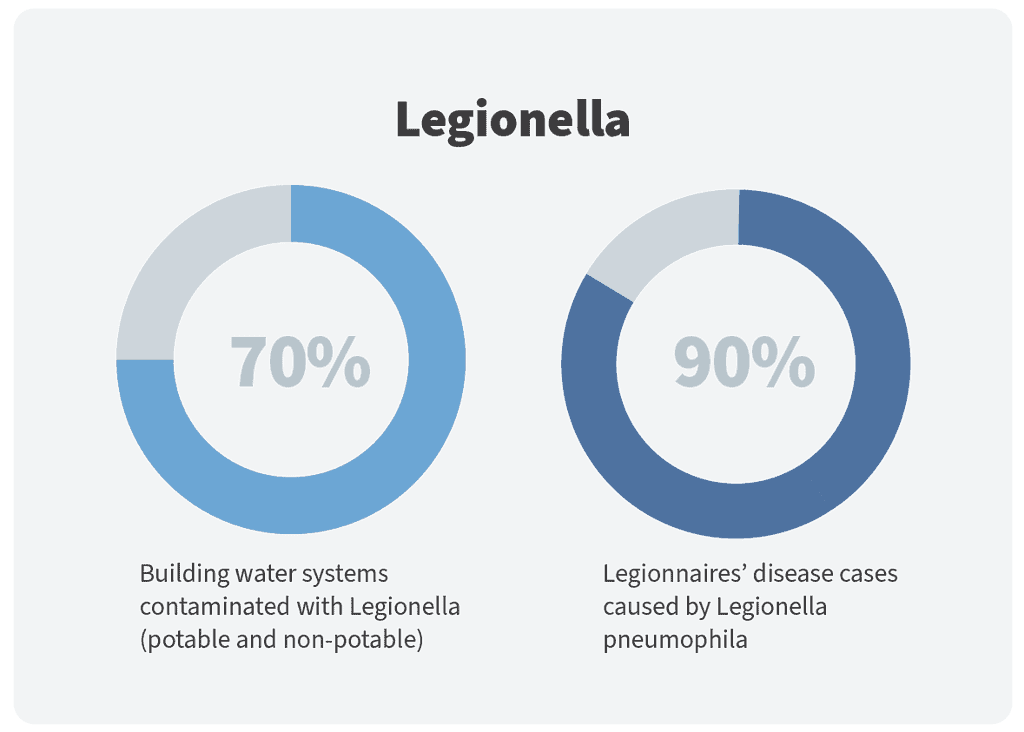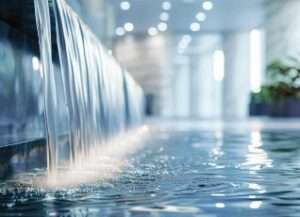What is Legionella?
Legionella is a bacterium that causes Legionnaires’ disease and Pontiac fever. It was named after the first known outbreak of Legionnaires’ disease in 1976 at an American Legion Convention.
Legionnaires’ disease is a severe type of pneumonia. Pontiac fever is a less severe illness that typically resolves without hospitalization.
Approximately 90% of Legionnaires’ disease cases are caused by Legionella pneumophila. Non-pneumophila species are responsible for fewer than 10% of cases.

Where is it found?
Legionella can be found in natural water sources. It can survive traditional municipal water treatment processes and be distributed to buildings from the municipal water supply. Once in building water systems, ideal conditions, like warm water, sediment, and other microorganisms, can cause it to proliferate.
Potable water systems, especially hot water systems, are the highest concern for Legionella growth and transmission. High-risk non-potable systems include cooling towers, decorative water features, whirlpools, spas, and misters.
More than half of outbreaks occur in healthcare facilities. Outbreaks have also been linked to nursing homes, hotels, workplaces, apartment complexes, and community sources.

What are the health concerns?
Legionnaires’ disease can be contracted through exposure to contaminated water, usually via inhalation of aerosolized particles or aspiration. Cases have also been linked to direct installation, such as nasogastric tubes. People with weakened immune systems, chronic lung disease, diabetes, cancer, transplants, steroid use, and the elderly are at higher risk of contracting the disease. However, roughly 25% of cases have no known risk factors.
More than 95% of cases require hospitalization, and more than 30% require admission to the ICU. The disease fatality rate is over 10%. Healthcare facilities are the most common exposure setting, accounting for 57% of cases and 85% of deaths.

How can Legionella be controlled?
There are many strategies to reduce Legionella risk in building water systems. To start, Legionella testing should be conducted to identify if and where Legionella is present in the water system so evidence-based remediation strategies can be implemented.
Continuous supplemental disinfection can be installed to remediate the entire water system and provide long-term Legionella control. The most effective is copper-silver ionization. It is highly effective against Legionella and other waterborne pathogens and does not have any negative side effects, like corrosion or harmful disinfection byproducts.
Short-term remediation options, like chlorine shock treatments, have varying efficacy. If Legionella reduction is achieved, it is typically short-lived.
Point-of-use filters can be installed on faucets, showerheads, and ice machines to prevent exposure to Legionella and other waterborne pathogens. However, they do not remediate the water system and require ongoing maintenance and costs, so they are usually deployed temporarily or in high-risk units.
Engineering controls like circulation, flushing, and temperature can prevent favorable conditions but do not fully mitigate risk. These controls should be used in conjunction with other strategies.
A water management plan and routine Legionella testing should be utilized to help evaluate and manage ongoing Legionella risks in building water systems.

Download: Legionella fact sheet
Fill out the form below to download our Legionella fact sheet to keep on hand or to share with your team.


